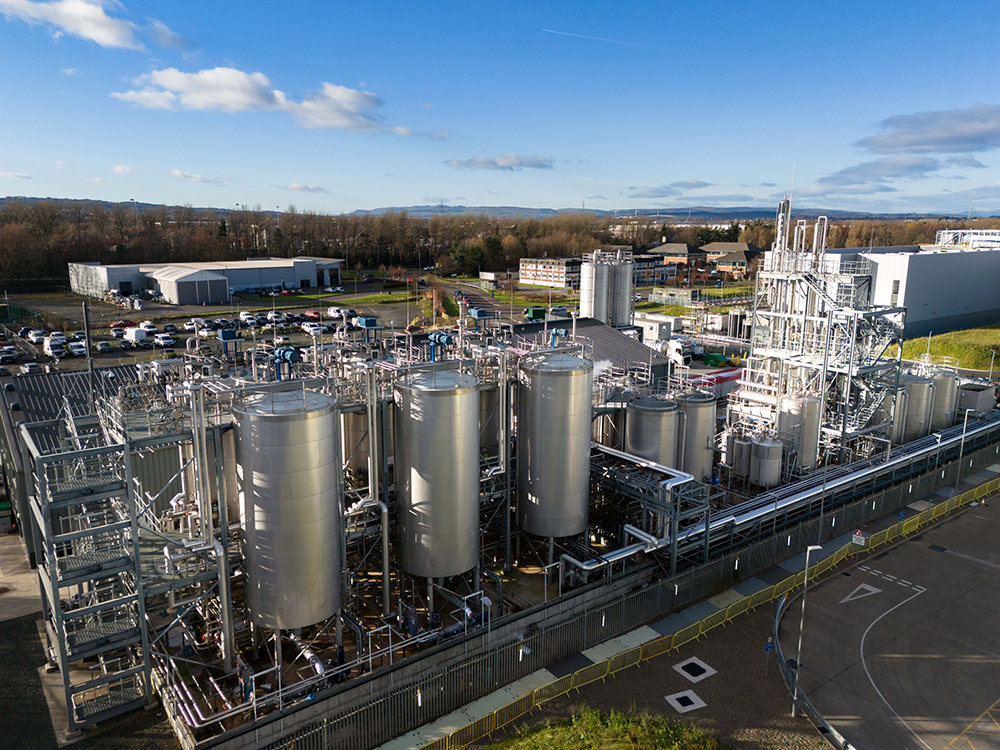Stuart Barker, Commercial Manager EU & UK at Indaver Solvents, explains how recycled solvents provide high-quality materials as part of a carbon-positive circular economy.
Solvents are used ubiquitously throughout the chemical industry as intermediates, fuels, and as components of a wide range of products. However, most leftover or used solvents are considered hazardous materials, and improper disposal can lead to environmental contamination, as well as potential health risks to humans and wildlife.
Most companies dispose of their leftover or used solvents properly and responsibly, but hazardous waste management can be cost-intensive, and companies are constantly having to invest in new solvents. Yet both of these expenditures and their associated environmental impacts could be avoided with the use of recovery technologies. Solvents lend themselves well to a circular economy, offering a more efficient and sustainable approach that supports various governmental policies and initiatives, including the EU’s Green Deal and the UK’s commitment to reaching net-zero emissions by 2050.
Circular Supply
Government targets all over the world highlight the need for countries to work towards economic growth without increasing the consumption of raw materials. As the global population continues to grow, there are simply not enough resources on this planet to support us all unless we take a smarter approach. Secondary raw materials recovered from industrial streams can replace primary raw materials if the recovered materials are of good quality, and as reliable and safe as the original forms. Solvents are a perfect candidate for this circular model, and recycling solvents can enhance a company’s environmental performance – something that is increasingly important for investors and customers.
Solvent recovery improves process efficiency, saves costs and simplifies the supply chain by eliminating the need to constantly purchase new solvents. Furthermore, if the recovery is performed on-site, it significantly reduces transportation costs, as well as reducing the overall supply chain burden and removing the need for expensive disposal procedures. Companies can typically expect to recover up to 95% of used solvents, even from more complex mixtures. In terms of quality and purity, most recovered solvents are indistinguishable from their original forms.
Solvent recovery is usually based on multi-stage fractionation and distillation, which separate components based on differences in their boiling points. These are both efficient and sustainable approaches that achieve high-purity solvent recovery in a circular system (Figure 1). Modern distillation and cooling columns can provide improvements in efficiencies and capacity, as well as better recovery from a wide variety of very complex industrial streams. In addition, boiler systems that run on used lower grade, recycled solvents can significantly reduce reliance on fossil fuels and lead to an even lower CO2 footprint.
Solving Global Issues
Modern technologies enable the recovery of very complex solvents, presenting solutions to contemporary global issues. For example, the rapid growth of the electric vehicle market has created a booming battery industry. However, the manufacture of batteries requires large quantities of solvents such as N-methyl pyrrolidone (NMP), which is needed for coating electrodes. Conventionally, NMP recovery has been impractical due to complexities arising from metal contamination. Recent research by Indaver Solvents and the Flemish Institute for Technological Research has shown that an advanced separation technology can remove these contaminants at a level that satisfies even the strict purity standards of the battery, microelectronics or pharmaceutical industries.
This new approach allows for the sustainable recovery and re-use of solvents like NMP, simultaneously reducing costs and CO2 emissions. The practical, complete and safe re-use of critical solvents like NMP is an important step towards full circular recycling, in which materials are not just reused, but even given higher value.
Calculating Environmental Impact
It should be possible to offer a carbon calculation for any industrial recovery project. Such calculations include a number of factors, including energy and fuel efficiencies. One tool that is now commonly used for estimating carbon savings is the University of Manchester’s award-winning CCaLC (an acronym for ‘Carbon Calculations over the Life Cycle’ of industrial activities). CCaLC helps manufacturers understand and demonstrate the carbon savings made through recycling solvents and other raw materials, versus using virgin materials.
According to a recent study performed by the University of Manchester using CCaLC, recycling solvents can save 46% to 92% of greenhouse gas emissions, compared with the use of virgin materials.
Scalability
The technologies involved in solvent recovery are highly scalable, making them accessible for companies of all sizes. While it might be a more obvious decision for large industrial manufacturers to build solvent recycling plants for their own use, the ability to recover solvents from even small volumes of contaminated mixtures is important if this approach is to bring value throughout industry. In order to achieve full circular recycling, it must be possible to leverage processes that can be scaled from small quantities to full-scale manufacture.
This is why, as well as enabling companies to recycle their own solvents on-site, independent solvent recovery sites are needed to facilitate the collection of even low volumes of used solvents for processing at a central point.
Advancing Technologies
Developments in available technologies are allowing companies to optimise the efficiency, capacity and sustainability of their solvent recycling processes. It is also important to extend the recovery offering to more complex mixtures.
Echoing the ambitions of the UK’s Science and Technology Secretary, who declared at techUK’s conference in March 2025 a national commitment to reaping the rewards of advancing technologies, recent developments in the UK are demonstrating strong leadership in this area. For example, a new pressure swing plant will come into commission at Indaver Solvent’s UK site in the summer of 2025.
This bespoke technology is a niche offering that enables the management of certain highly complex mixtures that conventional distillation plants struggle to manage. However, just like distillation, it can achieve high-purity solvent recovery in a circular system (Figure 1). Therefore, the use of pressure swing distillation for the separation of complex mixture adds another solution to the solvent recovery sector that drive us further towards a fully circular economy.
The Only Logical Path
The transition to a circular solvent economy brings various benefits that help companies save money, simplify supply chains and become more environmentally friendly. Modern technologies and processes enable the recovery of increasingly complex solvents, across a range of volume scales. They also ensure that recovered solvents are of as high quality and purity as their original forms.
A circular economy provides the only logical path to meeting the targets laid out in government policies and initiatives all over the world. Europe and the UK have established themselves as strong players in the technology landscape, especially green technologies that will help the region – and guide other countries – in their transition to a circular economy.
Stuart Barker is Commercial Manager EU & UK at Indaver Solvents. He has over 20 years of experience in the chemicals sector, with a solid operational background and expertise in solvents recovery and recycling.











